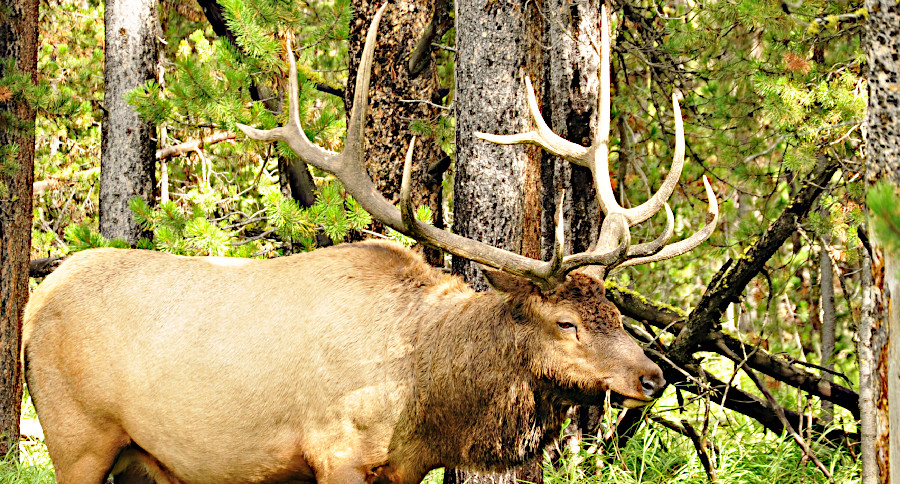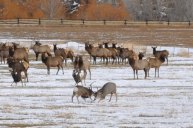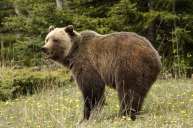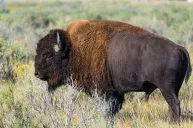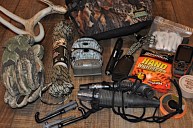Here is the decision on Herrera v. Wyoming, and what it means for hunting.
It isn't often that a hunting case pops up in the United States Supreme Court, but that is just what has happened with a 2014 case that crosses Montana and Wyoming state lines, into a National Forest, and involves the harvest of an elk.
It's a complicated case that combines natural resources, history, poaching accusations, and treaties hundreds of years old between the Native American tribe and the federal government. The case was just won by a Crow tribal member, and the implications could stand to affect the way hunting, and wildlife management, is viewed moving forward.
We'll try to break this complicated treaty rights court case down so that it's easier to understand.
The incident in question
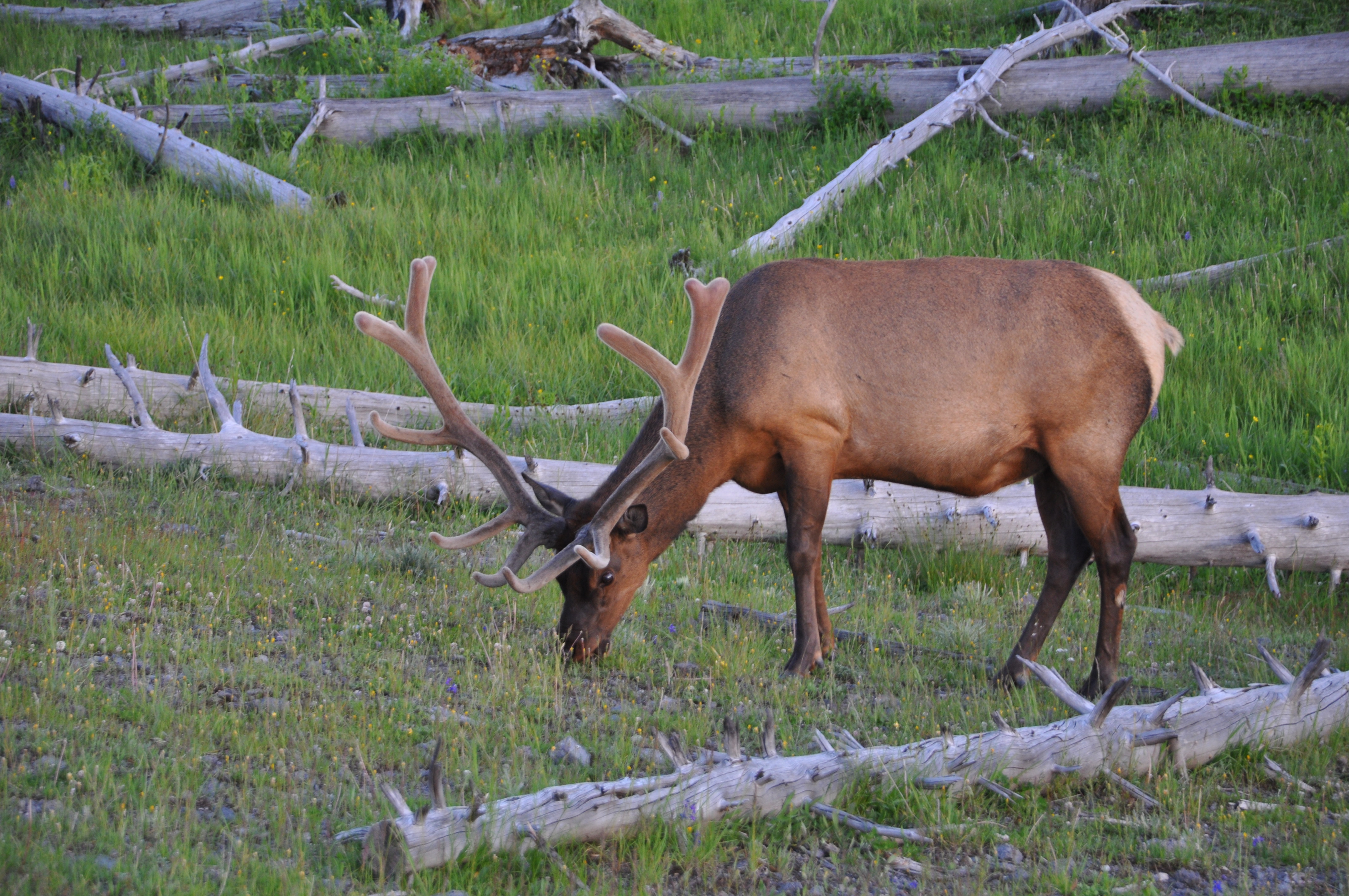
Travis Smola
As we noted, this case dates to 2014, when Clayvin Herrera was hunting elk on the Montana/Wyoming border. He and his hunting partners started on the Montana side in the Crow Native American reservation. An elk was shot and fled, jumping the fence to Wyoming and the Bighorn National Forest.
The group took three elk in total out of the forest, which they reportedly ate that winter.
However, Herrera didn't have a Wyoming hunting license, and it was a closed season at the time. As a result, in 2015, Herrera and his friends were all charged with poaching by the state. Herrera's friends pled guilty and paid fines in the case. Herrera's case went to a jury that found him guilty and he was given a year of probation, was fined $8,000 and lost hunting privileges for the next three years.
The case went to appellate court and then the State of Wyoming's Supreme Court. Both courts upheld Herrera's conviction. After that, there was only one place it could go: The U.S. Supreme Court. It's more than just interesting that a case like this got the highest court in the land. It's downright fascinating, it all has to do with treaty hunting rights and a 151-year-old agreement between Crow tribal members and the U.S.
Where things get complicated
In building Herrera's defense, his legal team brought into play a written agreement from back in 1868. The Treaty of Fort Laramie was an agreement between the Crow tribe of Native Americans and the U.S. government that established the Crow reservation on the border.
Here is where things start to get complicated. The Treaty of Fort Laramie also contained wording that protected the tribe's hunting rights in their traditional homeland. This part is key, because technically that traditional homeland was much larger than the reservation and spilled over the Wyoming border to the area Herrera and his fellow tribe members shot the elk.
As a result, Herrera's defense argued that as a member of the Crow tribe, state law did not apply to him as he was exercising his right to hunt as laid out by the Treaty of Fort Laramie.
But wait, there's more
A legal issue like this is sort of like a cake; there are many differing layers to it. Part of the Treaty of Laramie's legal language also included a phrase dictating that those hunting rights remained valid so long as the areas remained "unoccupied lands of the United States."
This "unoccupied lands" terminology became another key part of the case. Wyoming's statehood was not established until 1890, and the establishment of the Bighorn National Forest didn't happen until 1897. The state argued that once the National Forest was established, that area ceased to be "unoccupied."
Another ruling, known as the Crow Tribe of Indians v. Repsis, was used as further argument for that sentiment. In that case it was ruled that Fort Laramie became invalid the moment Wyoming became a state. This case was preceded by another ruling (Ward v. Race Horse) that basically said the same thing.
How did Herrera win?
https://www.youtube.com/watch?v=PYnlJUbTemo
This entire case comes down to precedence with similar cases. Historically, the courts have ruled with Native Americans in these cases, but the one closest to Herrera v. Wyoming is the case of Minnesota v. Mille Lacs Band of Chippewa Indians in 1990. This was the situation that the Supreme Court cited in their decision, because they also said that case repudiated the decision of Ward v. Race Horse.
Minnesota v. Mille Lacs Band of Chippewa Indians also involved the hunting and fishing rights of tribal members outside the confines of a reservation. When the Chippewa signed the Treaty of St. Peters in 1837, it also contained similar wording to the Fort Laramie treaty that allowed tribal members to hunt outside the confines of the reservation.
Likewise, the state tried to rule that once Minnesota officially became a state, the tribe's hunting rights expired outside of the reservation's borders.
This case got quite a bit more complicated than that, but all you really need to know is that the Chippewa won the case because the Supreme Court ruled that the tribe's treaty rights could only be ended by Congress. The Supreme Court decided the same rules applied to Herrera v. Wyoming. The result was a 5-4 majority decision. Voting with the tribe were Justice Sonia Sotomayor, Elena Kagan, Ruth Bader Ginsburg, Stephen Breyer and Neil Gorsuch.
The story likely isn't over yet
While Herrera did win the case, with the court ruling the tribe's rights under the treaty were still valid, there is another wrinkle to this story. The Supreme Court also ruled that "Wyoming could regulate the exercise of the 1868 Treaty right 'in the interest of conservation.'"
Basically, this means the case will likely go back to Wyoming state courts where there will likely be more debate and discussions with state officials and tribe members.
It is definitely an interesting case. Considering the long history of conflict between states and tribes over hunting and fishing rights, we wouldn't be surprised to see more conflict between Indian tribes and the state over exactly how Wyoming will attempt to enact any regulations over the tribe's hunting activities.
For more outdoor content from Travis Smola, be sure to follow him on Twitter and check out his Geocaching and Outdoors with Travis Youtube channels.
NEXT: NORTH VS SOUTH: WHY SOME PEOPLE SEEM TO LOVE HOGS AND OTHERS DON'T
WATCH
